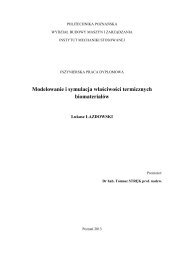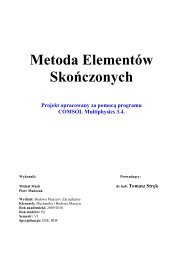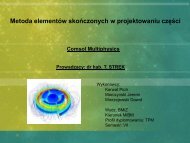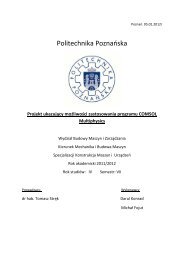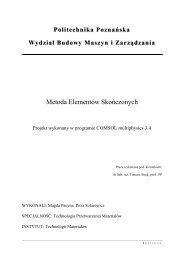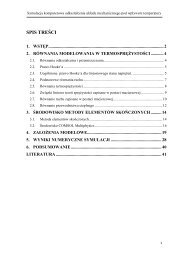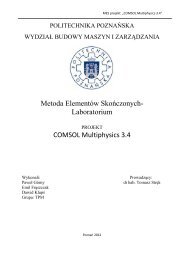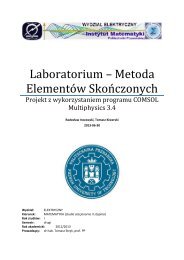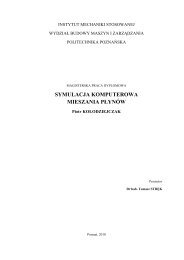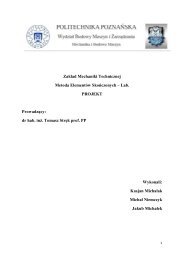Lithium-Ion Battery Simulation for Greener Ford Vehicles
Lithium-Ion Battery Simulation for Greener Ford Vehicles
Lithium-Ion Battery Simulation for Greener Ford Vehicles
You also want an ePaper? Increase the reach of your titles
YUMPU automatically turns print PDFs into web optimized ePapers that Google loves.
ENERGY<br />
MIT, CAMBRIDGE, MA<br />
Log 10<br />
(|E ||<br />
|+1) − T e0<br />
=4[keV] − n e0<br />
=0.8E20[m −3 ]<br />
4<br />
3.5<br />
3<br />
2.5<br />
2<br />
1.5<br />
1<br />
properties of plasma facing antennas <strong>for</strong><br />
realistic fusion plasma parameters. The<br />
FEM approach pushes the boundary of<br />
our simulation capabilities to a new level,<br />
where the modeling possibilities are only<br />
limited by the designers' imagination. In<br />
this context, COMSOL Multiphysics can<br />
be used as an established, user-friendly<br />
tool which brings the design of plasma<br />
facing antennas closer to the realm of engineering.<br />
Furthermore, the integrated<br />
multiphysics environment of COMSOL<br />
allows evaluation of thermal and mechanical<br />
stresses self-consistently and<br />
within the same simulation tool, enabling<br />
faster, more efficient antenna design.<br />
“The integrated<br />
multiphysics environment<br />
of COMSOL allows<br />
evaluation of thermal<br />
and mechanical stresses<br />
self-consistently<br />
and within the same<br />
simulation tool, enabling<br />
faster, more efficient<br />
antenna design.”<br />
Result from the LHEAF code, showing the magnitude of Lower Hybrid waves parallel electric field as they<br />
propagate in a cross section of the Alcator C-Mod tokamak. The waves are launched from the antenna<br />
structure and propagate inside of the plasma, where they are damped by Electron Landau Damping. The<br />
evaluation of the EM problem was efficiently done within COMSOL.<br />
0.5<br />
0<br />
In particular, one of the challenges<br />
of <strong>Ion</strong> Cyclotron heating in tokamak<br />
plasmas is the production of RF driven<br />
plasma sheaths. These sheaths create<br />
large electric potentials and are capable<br />
of accelerating ions from the plasma edge<br />
into material surfaces inside the tokamak.<br />
This process can result in surface<br />
sputtering and local melting, which can<br />
introduce unwanted impurities into the<br />
plasma. Using a cold plasma model within<br />
COMSOL we are able to quantify local<br />
electric fields near the plasma boundary<br />
and try to mitigate the effects of these RF<br />
sheaths through a innovative rotated antenna<br />
design.<br />
2 6 // C O M S O L N E W S 2 0 1 1<br />
➮<br />
Cov ToC + – A<br />
➭<br />
24-27 CN MIT 2011.indd 26 5/13/11 10:09 AM



